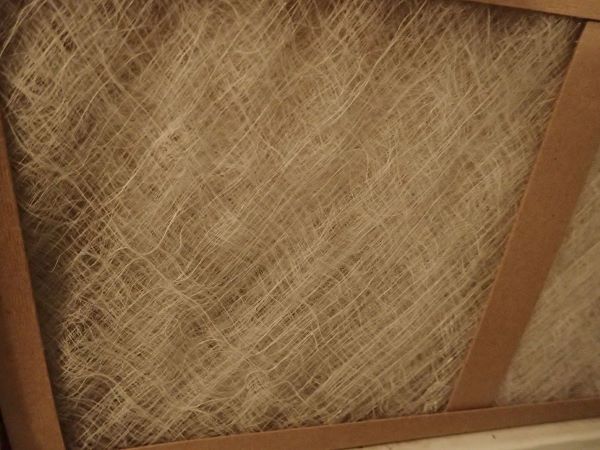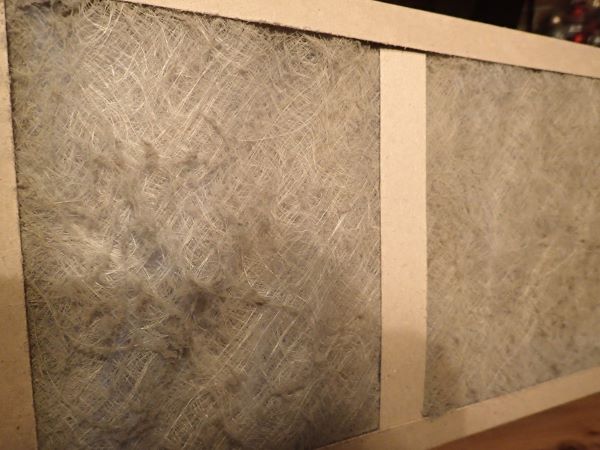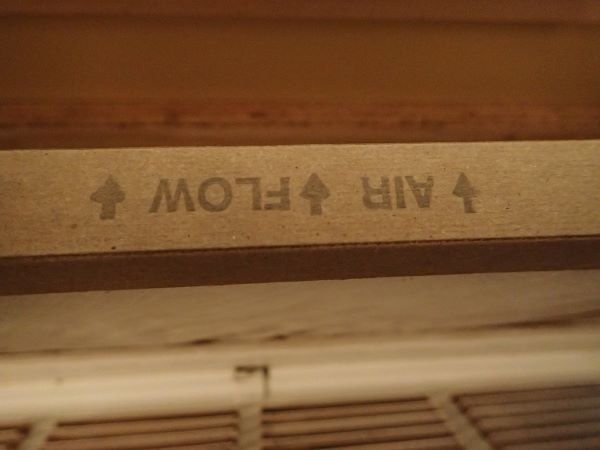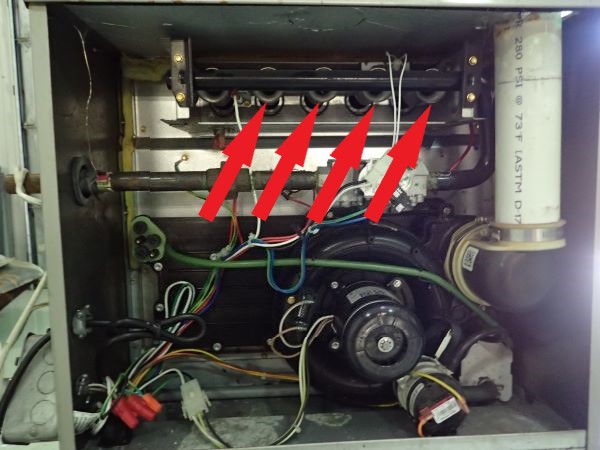As cold weather sets in for those of us that actually get a winter in the Northern Hemisphere, a property owner needs to think about another expensive home system that is often taken for granted, your HVAC system.
Whether you have a heat pump with electric backup, a gas fired furnace, a fuel oil fired furnace, or even electric strip heat, your heating system requires some routine attention to maximize efficiency and get the most life out of the unit.
As a homeowner, the easiest and cheapest thing you can do to maximize the efficiency of your heating system is to CHANGE THE FILTER. Most manufacturers and also most HVAC professionals I have spoken with recommend changing your filter(s) at least every three months. The filter in your HVAC system works by trapping particles in the filter media. As the particles build up, they hinder the flow of air through the media. Figures 1 and 2 show a dirty filter and a clean one for reference.
A dirty filter causes the fan motor to have to work harder, which uses more electricity. Also, if the filter becomes almost entirely blocked, the force exerted by the air being impeded can cause the filter to collapse, sending debris to the coil or burners. Additionally, most filters are directional, meaning they are designed structurally to stand up to the forces exerted by the moving air in one direction. Always install the filter with the arrows in the direction of flow. Figure 3 shows an example of these flow direction arrows.
It is worth noting that 3 months is just a general rule of thumb. The presence of pets that shed, smoking, cooking which emits grease vapor – (you get the idea) — can and will reduce the life of your media based filter and will require more frequent filter changes.
Different heat sources have different requirements for routine service. The best place to educate yourself on the recommendations for routine service would be your owners/operators manual. This should have been provided with your HVAC unit and is often found stored near the actual unit if it was not handed to you when your system was installed. Manuals can often be obtained from the website of the manufacturer using the model number for the respective system.
Gas fired furnaces have unique components that require periodic maintenance. Pressure switches to prove there is airflow, and flame detector sensors to prove the burners are lit are just two that come to mind. This is where a HVAC professional can help you with this routine service. The trained and experienced HVAC technician should also perform an inspection of your actual burners. Cracks in the burner could create a dangerous situation where carbon monoxide or other products of combustion could leak into your living space. Figure 4 shows an example of gas fired burners in a furnace. A thorough inspection should help identify this condition, if it exists.
Speaking of carbon monoxide, you do have a carbon monoxide detector installed and does it work correctly? Carbon monoxide detectors have a lifespan, just like people, pets or HVAC systems. They stop working after some period of time. Some work for 5 years, while others last 10 years. Since 2009, Underwriters Laboratories (UL) has required end of life warning to alert occupants that the carbon monoxide detector has reached the end of its useful life. That annoying beep that always seems to happen at 2 in the morning, don’t ignore it! Again, the owners/operator’s manual is the best place to start for determining the lifespan of a carbon monoxide detector. Don’t delay in replacing a faulty detector, carbon monoxide is colorless and odorless and just tends to make people want to go to sleep, but they might not wake up from that sleep.
Fuel oil furnaces have some similar safeties usually in the form of pressure switches which should be serviced per the manufacturer’s instructions. The same inspections of the burner we discussed on the gas fired furnaces is also prudent.
In more temperate climates, we have the heat pump. Heat pumps work by extracting heat from the outdoors using refrigerant and then transporting it into your home. You are, in effect, air conditioning the outdoors and putting that heat into your home. A trained HVAC technician can check your refrigerant pressures and the operation of the system to help get the maximum efficiency and life out of your system.
Electric heat should not be ignored either. Even with high efficiency filters and routine filter changes, dust could build up on the strips and cause an odor the first time the heat is used for the season. Having this happen under the watchful eye of a trained HVAC tech is usually preferable to waking to the smell of something burning in the middle of the night and a friendly home tour by your local fire department to diagnose the source of the burning smell.
A little routine maintenance can go a long way toward getting the maximum efficiency and life out of your HVAC system, while minimizing surprise repairs. Don’t skip the recommended maintenance as repair bills, particularly after hours and weekend/holidays, can really add up.
Chad Jones, PE, CFEI, CVFI, CMSE has a Bachelor of Science in Mechanical Engineering from Clemson University. Chad has over 25 years of engineering experience including mechanical, process, and manufacturing engineering. This work has included equipment design, machine safeguarding, cost estimating and safety compliance. Chad also has over 10 years of commercial, industrial, and residential HVAC and plumbing design experience. A lifelong auto and motorcycle enthusiast, Chad is accomplished in the maintenance, repair, and modification of vehicles and engines. Chad is a Certified Fire and Explosion Investigator, Certified Vehicle Fire Investigator, and IFSAC certified Firefighter II in Greenwood County, South Carolina.







